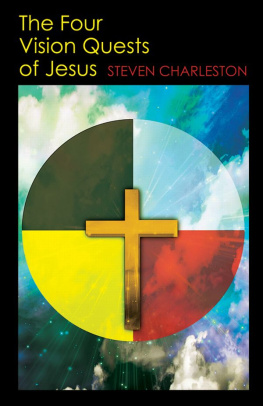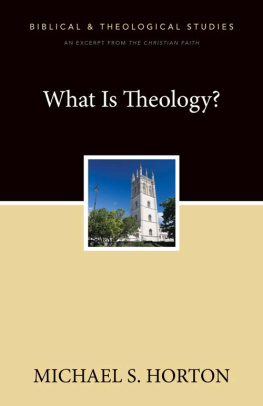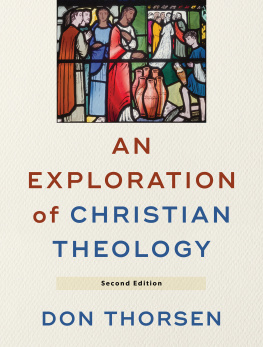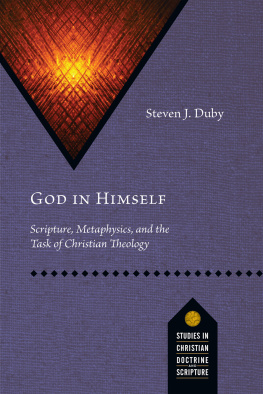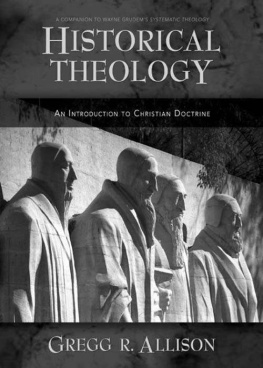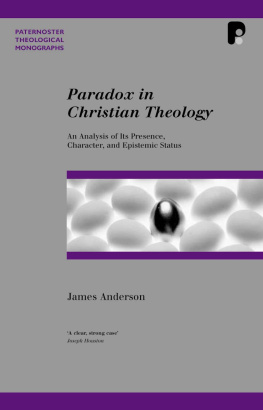Copyright 2015 Fortress Press. All rights reserved. Except for brief quotations in critical articles or reviews, no part of this book may be reproduced in any manner without prior written permission from the publisher. Visit http://www.augsburgfortress.org/copyrights/ or write to Permissions, Augsburg Fortress, Box 1209, Minneapolis, MN 55440.
The paper used in this publication meets the minimum requirements of American National Standard for Information Sciences Permanence of Paper for Printed Library Materials, ANSI Z329.48-1984.
Manufactured in the U.S.A.
This book was produced using PressBooks.com.
This book began in the classroom. It grew out of the pedagogical experience of teaching Native American religious traditions as part of a Christian seminary curriculum. For two years, I was fortunate enough to join the faculty of Saint Paul School of Theology as a visiting professor. Funding for my position came from a grant from the Henry Luce Foundation to offer instruction in Native American theology. In carrying out that job description, I was twice fortunate because I had an opportunity to team teach with Dr. Elaine Robinson, the Dean of Saint Paul School of Theologys Oklahoma City campus. Elaine and I offered a course called Theology in Red and White. It was based on a theological conversation between Native American thought and Christian feminist theology. It was during one of our discussions about the class that we envisioned the need for the book that is now before you.
Essentially, Elaine and I shared the opinion that Native American Christian theology is an underrepresented category on the menu of resources available to university or seminary teachers, not to mention to the lay and clergy community of every Christian denomination, or even to a wider audience of spiritual seekers. Our own pragmatic experience in the classroom brought us to this conclusion. While there is, for example, an abundance of material from the Christian feminist perspective, the choice of texts from the Native American context is very limited. Moreover, these texts are somewhat dated; for example, Vine Deloria Jr.s work, God Is Red, which is a standard for most courses on Native religious traditions, first appeared in 1973. In addition, we came to appreciate how much of the Native American viewpoint is grounded in what could be called a deconstructive theory, i.e., an approach that offers a critical analysis of Christianity from the historical trauma suffered by Native people. Consequently, many Native authors interpret Christianity based on a negative appraisal of colonial Christian history. While Elaine and I both support that analysis as an expression of Native American historical truth-telling and self-determination, we wondered if it might also be helpful to have more of a constructive approacha text that expresses the unique theological perspective of Native Americans who embrace Christianity. In short, we asked ourselves a formative question: What would a contemporary text on Native American Christian theology read like if it developed its subject from a constructive view of Christianity?
The goal of this book, therefore, is to provide a first step in trying to answer that question. It seeks to be a contemporary expression of Native American theology, grounded in the historic and cultural realities of the Native American experience (i.e., not glossing over the trauma of colonialism, assimilation, racism, and/or oppression), but presenting a proactive assessment of Christianity as a positive religious expression for Native people to claim for themselves, define as they choose, and call their own based on their own traditions.
Once we had determined to attempt to answer our foundational question, Elaine and I quickly agreed on two critical points: First, we could not answer the question by ourselves. She was very conscious of the need for the answer to come directly from Native American sources, not influenced by any other cultural perspectives, no matter how well intentioned and supportive those perspectives might be. As a non-Native person she felt her role must be to facilitate, not interpret. As for me, I recognized that I was only one voice in a project that clearly required a chorus. To do justice to our goal, we knew that we needed to assemble a team of scholars. We set about doing so, looking not only for persons with academic credentials, but also men and women recognized as elders or leaders in their Native communities. We sought to create a balance of gender and age; we were conscious of the need to cross both denominational and tribal borders to be as inclusive as possible.
Second, our question could not be definitively answered by a single book. We knew that what we were attempting to create was only a first step in a direction we hoped and expected many others would soon travel with us. Our project, therefore, is as much an invitation as it is an interpretation. Our desire is that it will be a catalyst to encourage other Native people to join the conversation, develop their own resources, and begin to expand the resource bank of Native theological materials available to a wide range of interested readers. That last statement needs highlighting: this book is not only for teachers, for academic professionals in universities and seminaries, but is for all people.
In terms of content and style, our writing team has sought to make this work as accessible and useful as possible to as many people as possible. We are not concerned with mirroring or mimicking other cultural expectations for a theological study. We are concerned to communicate a range of Native American thought as clearly and coherently as we can in a voice that is authentic to the Native experience. That voice will become recognizable as you read the book because, while there are several authors speaking, there are discernible accents of agreement in what they have to say. In other words, you will begin to perceive some themes that emerge and reemerge in the exposition of different theological topics. These landmarks are the signs of a deep cultural consistency. This is clearly a Native American project. It reflects many of the ancient values and traditions common to Native people, even in light of the diversity of Native nations and languages. Without presuming to reveal all of these cultural trajectories in this brief introduction, I will underline a few to better describe what I mean:
- There is a consistent thread of the cultural value of the we rather than the I. The communal, corporate nature of Native life appears clearly in the theological vision of our authors.
- There is a value placed on story as the medium for theological communication.
- Kinship as the context for Native theology is grounded in the traditional bonds between both human beings and other parts of creation.
- The recognition of the trauma suffered and survived by Native people and the commitment to traditional Native values and practices as acts of self-determination are inherent in each contribution.
To honor these four common threads, and many more that you may discover, we have given each Native author the integrity of his or her own theological area of interest. In this way, you could say that our writing team reflects the pan-Indian reality of Native American life in this part of the twenty-first century. In creating this work, for example, we gathered in person as a collaborative council of Native people, breaking bread together, laughing together, working together. We sought to practice what we preach by being a community. We told stories. We honored our ancestors. We trusted in the spiritual mystery that united us to take us to the place we needed to be in preparing this volume for those who would read and use it.


